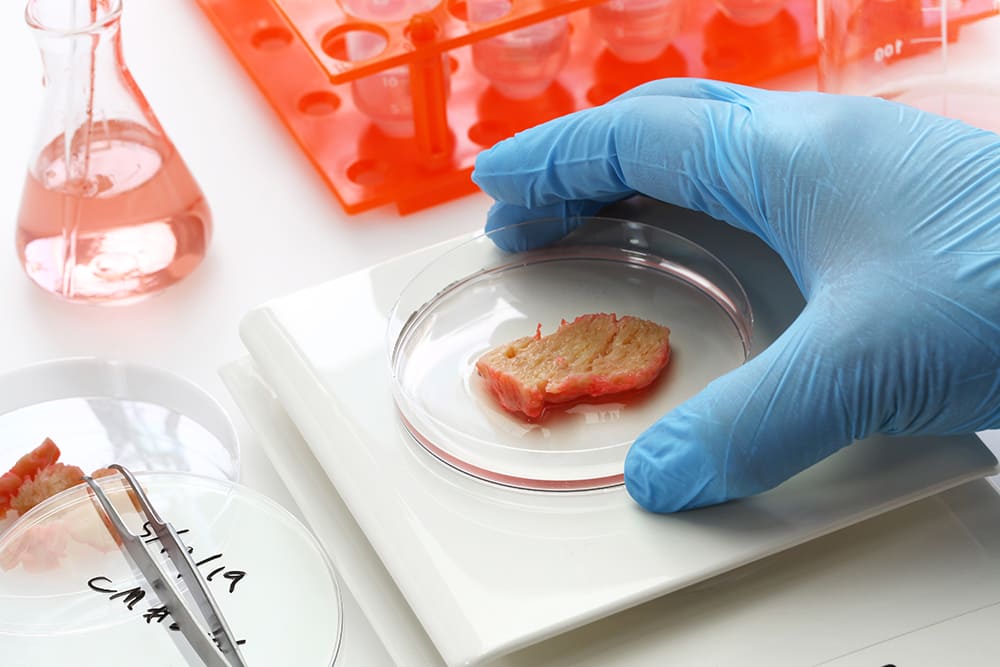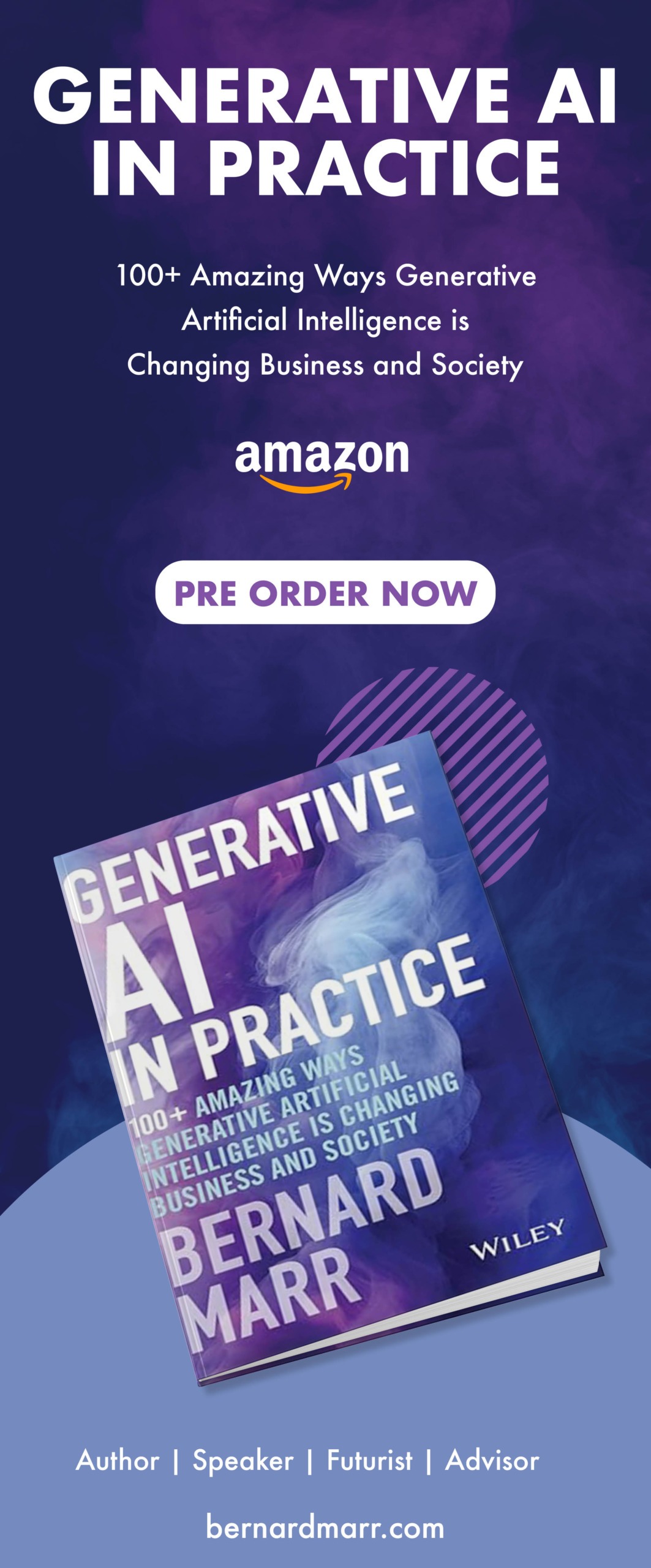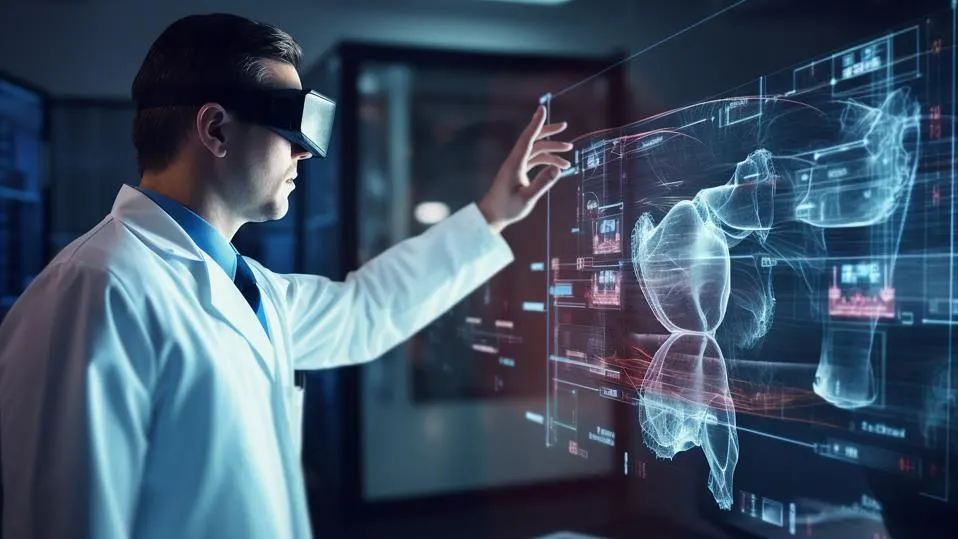What Is Lab-Grown Meat?
26 October 2021
What if your next cheeseburger didn’t come from a cow – but was served up on your plate straight from a laboratory, instead?
Scientists have recently found ways to create meat in labs, entirely outside animal’s bodies. This lab-grown material is also known as cultured meat and is genetically identical to meat from slaughtered animals.
Let’s use cows as an example. Scientists use the cow’s stem cells, which are the building blocks of muscle and organs, to kick off the process. They place the cells in Petri dishes with carbohydrates and amino acids to enable the growth of the cells. Once enough muscle fibers have grown, the scientists have a substance that resembles ground beef.

Cultured chicken and duck products are also currently in development, in addition to beef. Researchers are also exploring the possibilities of using cell agriculture to create eggs, milk, and leather.
The biggest promise of lab-grown meat is a reduced impact on the environment. Lab-grown beef, for instance, requires 99% less land use and 45% less energy use. It also produces 96% fewer greenhouse gas emissions.
Cutting meat consumption and moving to a plant-based diet is one of the most effective ways individuals can reduce their environmental impact on the world, but the adoption of cultured meat could change that.
Cultured meat might also be healthier for us, given that scientists can alter features like fat content to suit consumer needs. When you consume lab-grown beef, it won’t include antibiotics, and you don’t need to worry about microplastics in your fish. Lab-grown meat might even reduce the risk of zoonotic diseases like COVID-19 because of the reduced interaction between humans and factory farms.
One of the key challenges at the moment is that lab-grown meat is still too expensive to create. But as the technology improves and larger and more efficient production facilities are created, we can expect prices to decrease steadily to a point where lab-grown meat could even be cheaper than the meat we have today.
Cultured meat isn’t yet widely available, but there are many companies racing to bring lab-grown meats to restaurants and grocers at affordable prices. In 2020, American company Eat Just passed a safety review by the Singapore Food Agency for its “chicken bites” product. And the restaurant 1880 in Singapore became the first place to sell cultured meat on the menu. I expect that this initial approval could lead to the widespread production and distribution of various types of lab-grown meat products in many countries.
Mosa Meat, the Dutch start-up company that created the first cultured burger in 2013, is now predicting that once they scale up production, the cost of growing a burger in a lab could drop as low as $11.
British biotechnology company CellulaREvolution is working on ways to speed up the cultured meat process and make it more affordable. The company’s co-founder Leo Groenewegen says, “a small steak will contain 10 billion cells, and using traditional batch processes this could take a single bioreactor one month to produce. Our technology could shorten that to a few days.”
Steve Myrick, Vice President of Memphis Meats, wants his company to bring lab-grown meat to the mainstream – but he doesn’t think cultured meat will eliminate the real thing any time soon.
Steve says, “I anticipate Memphis Meats products going mainstream in the next 10 to 20 years but also being a part of the human diet alongside conventional meat, plant-based meat alternatives, and a number of other protein sources. We need all the tools in our toolkit to feed humanity.”
I will definitely be keeping a close eye on the developments around cultured meat.
Related Articles
The 12 Best Smart Home Devices Transforming Homes in 2025
By now, “smart” versions exist of just about every home appliance, gadget and gizmos we can think of. However, manufacturers continue[...]
11 Most Reliable AI Content Detectors: Your Guide To Spotting Synthetic Media
Since the launch of ChatGPT just two years ago, the volume of synthetic – or fake – content online has increased exponentially.[...]
The AI-Powered Citizen Revolution: How Every Employee Is Becoming A Technology Creator
Something remarkable is happening in organizations around the world.[...]
6 Mistakes IT Teams Are Guaranteed To Make In 2025
The next wave of artificial intelligence isn't just knocking at enterprise doors - it's exposing fundamental flaws in how organizations approach technology transformation.[...]
2025’s Tech Forecast: The Consumer Innovations That Will Matter Most
Consumer technology covers all of the tech we buy to make our lives more convenient, productive or fun.[...]
7 Healthcare Trends That Will Transform Medicine In 2025
Healthcare has evolved dramatically in recent years, with technology driving countless new opportunities, just as demographic and societal factors have created new challenges.[...]
Sign up to Stay in Touch!
Bernard Marr is a world-renowned futurist, influencer and thought leader in the fields of business and technology, with a passion for using technology for the good of humanity.
He is a best-selling author of over 20 books, writes a regular column for Forbes and advises and coaches many of the world’s best-known organisations.
He has a combined following of 4 million people across his social media channels and newsletters and was ranked by LinkedIn as one of the top 5 business influencers in the world.
Bernard’s latest book is ‘Generative AI in Practice’.










Social Media